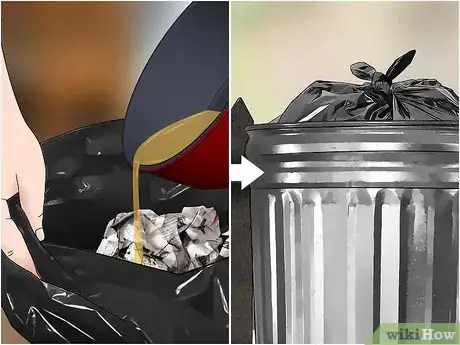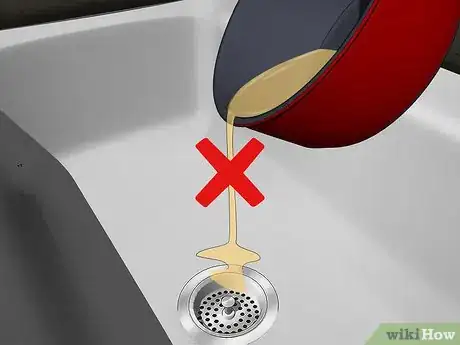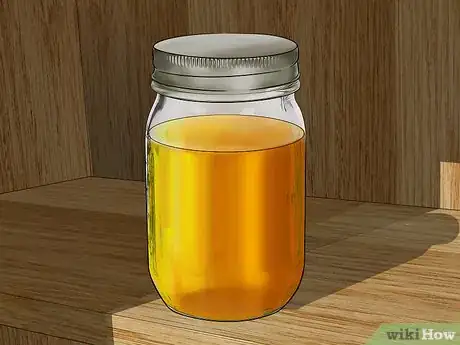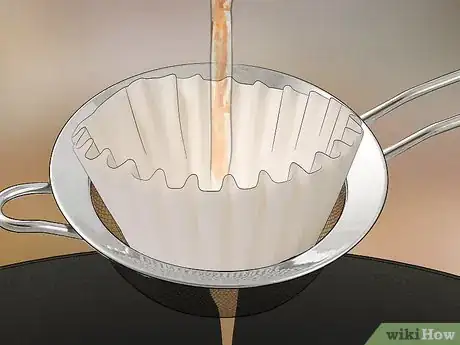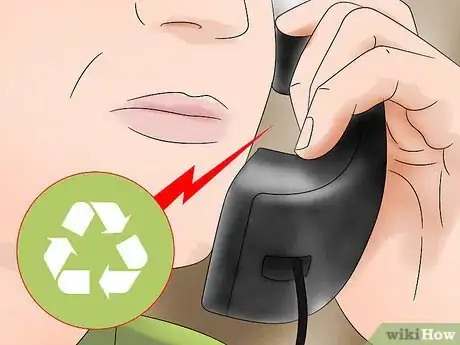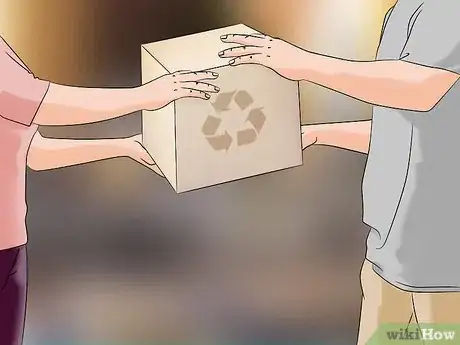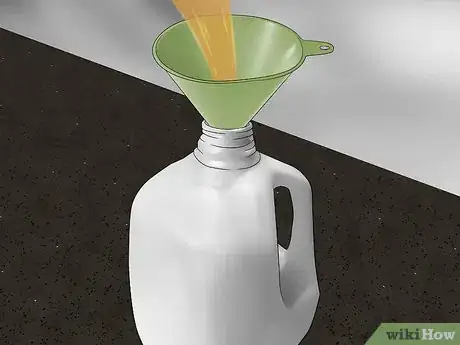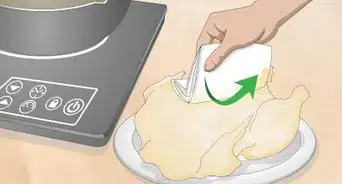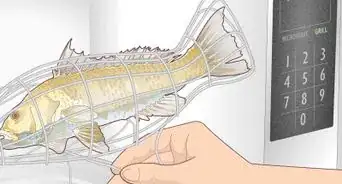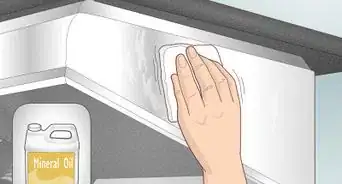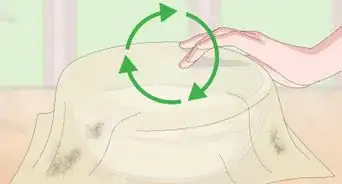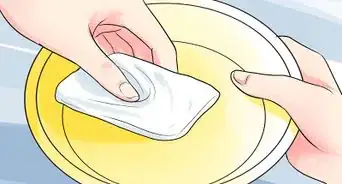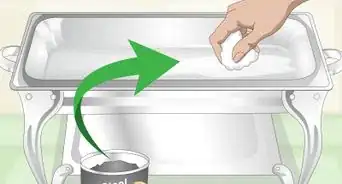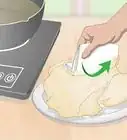This article was co-authored by Abyssinia Campbell and by wikiHow staff writer, Jessica Gibson. Abyssinia Campbell is an Executive Chef and the Owner of Chef Abyssinia, Personal Chef and Catering. With over ten years of experience, she specializes in catering, event planning, menu development, meal planning, and food business operations. When it comes to cooking, Chef Abyssinia enjoys using fruits, vegetables, healthy food alternatives, and local farm-fresh ingredients. She holds a BASc in Culinary Arts and Food Service Management from Johnson and Wales University.
There are 9 references cited in this article, which can be found at the bottom of the page.
wikiHow marks an article as reader-approved once it receives enough positive feedback. In this case, several readers have written to tell us that this article was helpful to them, earning it our reader-approved status.
This article has been viewed 1,943,951 times.
Some of the best foods are made with cooking oil, but cooking oil can be a mess to clean up. Once the oil has cooled, decide if you want to throw it away, reuse it, or donate it. Store the cooking oil in a sealable container before you toss it in the trash, set it out for curbside pick up, or drop it at a local restaurant for recycling. For proper disposal, remember to keep the oil out of your sink.
Steps
Putting Oil in the Trash
-
1Cool the cooking oil before you handle it.[1] To reduce the risk of accidentally burning yourself, let the cooking oil cool completely before you dispose of it. Never lift heavy pots full of hot oil or pour the hot oil into the trash. Depending on how much hot oil you have, you may need to wait a few hours for it to cool.[2]
- If you have to, you can leave the oil out overnight so it comes to room temperature.
- If you only have a small amount of cooking oil left in your pan, let it cool and then wipe it up with a paper towel.
-
2Choose a non-breakable container with a resealable lid.[3] If you want to reuse the oil, ensure that the container is clean. While you can use a glass container, it could shatter if you drop it. Plastic containers with screw tops such as peanut butter jars are great cooking oil containers. Remember to label the container to prevent someone from accidentally using the oil.[4]
- If you are not planning on donating your oil or reusing it, you can also cut the top off of a soda can and pour the oil into that.
Advertisement -
3
-
4Freeze and scoop the oil into the trash. If you don't have a resealable container, you can set the container with the oil in the freezer. For example, put an old can full of oil in the freezer for a few hours. Once the oil is hard, use a spoon to scoop the oil directly into the trash can.[7]
- You can also do this with a mug. Just wash the mug out with soapy water once you've disposed of the cooking oil.
-
5Pour the cooled oil into a plastic trash bag. Take a plastic bag that already has some waste. For example, you can use a bag that has old paper towels, veggie scraps, or tissues. Pour the cool oil directly into the bag so the trash and scraps soak up some of the grease. Tie the bag and place it in your trash can.[8]
-
6Do not pour the oil down your sink.[9] Never pour any cooking grease down your kitchen sink because it will eventually block the pipes. Diluting the grease with soap or water will not prevent the oil from coating the pipes.[10]
- Seriously clogged pipes can cause flooding and sewage backups, so it's important to never dispose of the oil in the sink.
-
7Keep cooking oil out of your compost. Don't put cooking oil that was used to fry animal products into your curbside or backyard compost. If you put cooking oil in the compost, it can attract rodents, reduce airflow in the pile, and slow down the composting.[11]
Reusing the Oil
-
1Store the oil at room temperature in an airtight container. If you'd like to accumulate a full container of oil before you reuse it, pour the oil into an airtight container. You can store the oil in your pantry at room temperature until you're ready to use it again.
-
2Filter the oil through a coffee filter before using it again. Place a coffee filter over the top of the container holding the oil. Secure the filter with a rubber band and slowly pour the oil through the filter. This will trap any solids so you're left with clearer oil.[12]
- Food particles in the oil can make it rancid or encourage mold to grow.
-
3Reuse the oil to fry more food. You can fry another batch of food as long as you fry a similar food since the cooking oil has already taken on the flavor of the food you fried in it. For example, if you fried chicken in the oil, avoid frying cider donuts in it. If you fried foods that were coated or breaded, you may have a harder time removing the fried bits and flavor from the oil.[13]
- Frying vegetables usually helps the oil keep a neutral flavor, so it's easiest to reuse this cooking oil.
-
4Avoid using the oil more than 2 times. If you've filtered the oil and stored it properly, you can reuse cooking oil a few times. Check the oil before you use it and discard any oil that's cloudy, foamy, or smells bad. Never mix different types of cooking oil and dispose of the oil after 1 or 2 uses.[14]
- Reusing the oil more than 2 times can reduce the oil's smoke point, so it burns easier. It can also cause the fat to release damaging free-radicals and trans-unsaturated fatty acids.
Recycling the Oil
-
1Contact your city about a recycling program. Call or check your local government's website about setting out used cooking oil for pick up. Some trash companies may even offer bins that you can set out for their collection. Your local fire department might also accept used cooking oil.[15]
- Your city may offer a grease pick up once or twice a year such as after Thanksgiving. Check with your city to learn about pick-up dates for the year.
-
2Donate the cooking oil. Check with local restaurants or recycling programs in your area to see if you can give them your used cooking oil. Companies can produce biodiesel to power their cars or businesses. In order to find an oil drop off location, run an internet search with the line “cooking oil donation [Name of Your City].”[16]
- In some cases, your cooking oil donation can be tax-deductible.
-
3Recycle any type of cooking oil. Most recycling centers can use any type of cooking oil to make biodiesel. Check with the center before dropping off your donation and avoid mixing your cooking oil with any other liquids.[17]
- Some recycling centers have bins that you can directly pour the oil into.
-
4Store the cooking oil in a container until you're ready to recycle it. Pour the cooled cooking oil into a storage container with a sealable lid. Choose a sturdy container such as a plastic jar which won't shatter if it's dropped. Keep the oil at room temperature until you're ready to drop it off at a recycling center or place it at the curb for pick up.[18]
Community Q&A
-
QuestionWhere should I keep my oil jar?
 wikiHow Staff EditorThis answer was written by one of our trained team of researchers who validated it for accuracy and comprehensiveness.
wikiHow Staff EditorThis answer was written by one of our trained team of researchers who validated it for accuracy and comprehensiveness.
Staff Answer wikiHow Staff EditorStaff AnswerA good spot would be under the kitchen sink where it won't get used accidentally and its greasiness won't be a problem for food packaging nearby.
wikiHow Staff EditorStaff AnswerA good spot would be under the kitchen sink where it won't get used accidentally and its greasiness won't be a problem for food packaging nearby. -
QuestionWhy do you not pour used cooking oil out down the sink drain or in the yard?
 Community AnswerBecause over time, oil poured into a sink can create a clog, especially when it is done repeatedly over time. It could also damage your soil and plants.
Community AnswerBecause over time, oil poured into a sink can create a clog, especially when it is done repeatedly over time. It could also damage your soil and plants. -
QuestionWhat is the shelf life of olive oil?
 Community AnswerIt can be as long as 3-4 years for an early harvest, high-polyphenol olive variety that has been filtered and packaged in a well-sealed tin or dark bottle, but that's not always the quality of olive oil you'll be using, so it's best to buy your olive oil in small quantities and use it within 6 months.
Community AnswerIt can be as long as 3-4 years for an early harvest, high-polyphenol olive variety that has been filtered and packaged in a well-sealed tin or dark bottle, but that's not always the quality of olive oil you'll be using, so it's best to buy your olive oil in small quantities and use it within 6 months.
Things You'll Need
- Storage container
- Coffee filter
- Rubber band
- Spoon
- Trash can
- Trash bags
References
- ↑ Abyssinia Campbell. Executive Chef. Expert Interview. 31 August 2021.
- ↑ https://www.bonappetit.com/test-kitchen/how-to/article/leftover-frying-oil
- ↑ Abyssinia Campbell. Executive Chef. Expert Interview. 31 August 2021.
- ↑ https://earth911.com/recycling-guide/how-to-recycle-cooking-oil/
- ↑ Abyssinia Campbell. Executive Chef. Expert Interview. 31 August 2021.
- ↑ https://www.bonappetit.com/test-kitchen/how-to/article/leftover-frying-oil
- ↑ https://www.tasteofhome.com/article/how-to-dispose-of-oil/
- ↑ https://www.tasteofhome.com/article/how-to-dispose-of-oil/
- ↑ Abyssinia Campbell. Executive Chef. Expert Interview. 31 August 2021.
- ↑ http://www.nyc.gov/html/dep/html/residents/congrease.shtml
- ↑ https://earth911.com/recycling-guide/how-to-recycle-cooking-oil/#recycling-locator
- ↑ http://www.sfwater.org/modules/showdocument.aspx?documentid=1743
- ↑ https://www.bonappetit.com/test-kitchen/how-to/article/leftover-frying-oil
- ↑ https://earth911.com/recycling-guide/how-to-recycle-cooking-oil/#recycling-locator
- ↑ https://earth911.com/recycling-guide/how-to-recycle-cooking-oil/
- ↑ https://www.luc.edu/sustainability/initiatives/biodiesel/oil-donations/
- ↑ https://earth911.com/recycling-guide/how-to-recycle-cooking-oil/
- ↑ https://www.swa.org/173/Used-Cooking-Oil
About This Article
To dispose of cooking oil, start by letting it cool completely. Once it's cool, pour it into a full trash bag so the scraps absorb some of the oil. If you don't have a full trash bag, put the oil in the freezer until it hardens. Then, use a spoon to scoop the oil out into the trash. You can also pour the oil into a sealable plastic container and then toss the container in the trash. Keep reading the article if you want to learn how to reuse or recycle your cooking oil!





